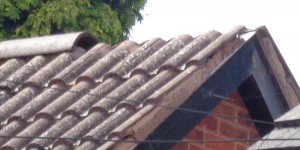
Many homeowners, including the author of this article, give little or no thought to their roof or its maintenance until they have problems. Often the first signs of a problem are a leak or a damp patch appearing in the ceiling. These may only appear at certain times, when it has been raining heavily. Or you find some broken slates on the ground outside your house which have been dislodged during high winds. Whilst you can ignore the problem for a while, at some stage the problem will have to be faced; roof repairs or maintenance are needed.
Identifying The Problem(s)
There are a variety of sources of problems like damp and leaks that can beset a pitched roof and the work required to fix them can range from simple to extensive. Before forming an opinion on what needs doing it may be time to take a look at your roof both inside and out. The age of the roof and the extent of the problems encountered will determine whether the roof can be easily repaired or whether the roof needs a complete refurbishment and upgrade.
A visual inspection of the roof can be made from ground level, maybe using binoculars if you have them. To cover all possible problems the roof space should also be inspected internally, if safe access is available, maybe via a loft hatch and ladder.
Once you have a clearer view on the visible problems then you can assess what is needed to put it right and how much that might cost in broad terms. At this stage you will need to contact a number of specialist roofing companies to do a survey and provide a written quotation for the work they identify as being needed.
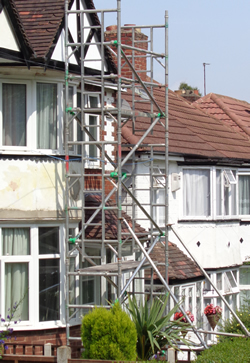
A Few Words About Safe Working On A Roof
Safe working on a roof almost always involves erecting scaffolding.
So when a roofing company quotes for anything other than a minor repair there will be a charge for scaffolding. This can range from £150 for a small access tower to £3,000 or more for complex scaffolding all the way around a large house.
You may find some roofers who will do small repairs using a ladder. If the work takes more than 30 minutes or involves lifting more than 10kg then this is not a good idea. So when looking at costs do bear this in mind. It explains why a job that may cost £100 to do at ground level may cost £500 at roof level.
For more information on this subject see Safe Working On A Roof.
A few slipped tiles may be the result of failure of individual tiles or the effect of a storm or extreme weather. These are relatively easy repairs. More widespread slippage could be rusting or corrosion of nails holding the tiles or battens or rotting of the battens.
Find out more about slipping or broken slates or tiles and the likely cost of repair
A blocked valley causing water to overflow can be cleared of debris fairly easily as a basic maintenance task. If the lead in the valley is cracked then replacing it is a bigger task. Temporary repairs can sometimes be done using flash band (self adhesive flashing tape) but in the medium term the lead will need to be replaced. Well installed lead valleys can last 40 years and more.
Find out more about lead valleys and the likely cost of repair
The roof verge will need to be stripped and rebedded with mortar (or repointed if it is a slate roof). This is generally a straightforward thing to do.
Find out more about rebedding roof verges and the likely cost of repair
According to The National Federation of Roofing Contractors (NFRC), moss on roof tiles is rarely a problem. It only needs to be removed if it is blocking gutters, outlets and other drainage points on the roof. Concrete tiles are most prone to moss as they tend to become pitted with time.
Find out more about dealing with moss on a roof
If the mortar on the chimney is starting to drop out then it’s time to get the chimneys repointed. The mortar at the top of the chimney may also need replacing (the haunching). At the same time it is worth getting the lead flashing round the chimney checked and replaced if required.
Find out more about repointing a chimney and the likely cost of repair
If the guttering is loose or damaged then leaks during heavy rainfall are likely. Leaking joints can be resealed but if upvc downpipes are cracked or cast iron downpipes heavily rusted then they may require replacing.
Find out more about replacing guttering and the likely cost of repair
Roofing felt was introduced in the 1930s, followed by breatheable membranes in the 1980s, to provide an additional layer of waterproofing under the tiles or slates. A small area of damage can be patched quite cheaply. If the damage is more extensive and the roof is leaking it is normally a sign of other problems with the roof.
Find out more about replacing damaged roof felt and the likely cost of repair
The introduction of impermeable roofing felt in the 1930s introduced other problems. If water gets trapped in the roof space and there is insufficient ventilation to remove it then the water condenses on the felt and then drips onto the floor of the roof space, causing damp patches to appear on the ceiling or walls of the floor below. To solve this a roof ventilator can be installed (low cost option) or the roofing felt needs to be replaced with a breathable membrane which allows moisture to escape.
Find out more about reducing condensation in roofs and the likely cost of repair
Before the days of roofing felt, lime mortar was used to cover the underside of tiles or slates to keep them in place and to windproof them and prevent strong winds from getting under the tiles and lifting them. Over time this mortar crumbles and breaks, normally falling with a thud on the floor of the roof space. Torching can be renewed using a lime mortar mix. Having torching, rather than a modern breathable membrane, is not seen as a problem in itself. If a complete roof is being refurbished then generally torching is replaced with breathable membrane. However in heritage properties torching may well be re-instated.
Find out more about repairing torching
If roof rafters or joists are wet or rotten then, depending on the scale of it, this is potentially a serious problem. The cause of the damp needs to be identified and rectified (it could be missing tiles or slates) and then the timbers need to be repaired or replaced. As the rafters carry the weight of the roof this is a specialist job. Contact a roofing specialist to do a full inspection and assessment.
Dips and undulations in roofs, particularly old roofs, are not necessarily a problem if they are stable. Many old building may have settled or the timbers dried out causing the dip. In historic buildings these features are often retained as part of the character of the building. However, if movement is continuing then a structural engineer should be consulted to establish the causes and to find a solution. One cause of sagging is when lighter slate or clay tiles are replaced on a roof by concrete tiles which can be 20% heavier. If the roof was not originally designed to take this increased weight then problems can occur.
Read more about:
When you have a grasp of potential costs then it is probably a good time to call a roofing company to provide quotations for doing the work. Many roofing companies will be happy to do a report on your roof, to highlight the key areas that need to be addressed. Since they do not charge for this report they will quite reasonably expect that there is a prospect of gaining an order from you, as part of a competitive quote process involving two or three other companies.
A reputable roofing company will generally give a fair assessment of the work required on a roof. However if you want a totally independent view then a surveyor will charge somewhere between £100-£300 to survey the visible areas of a roof. Inaccessible areas can not be studied in any detail without scaffolding access or nowadays a video camera on a telescopic pole.
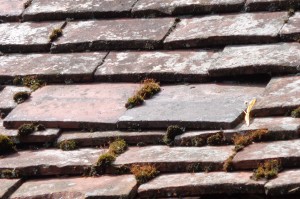
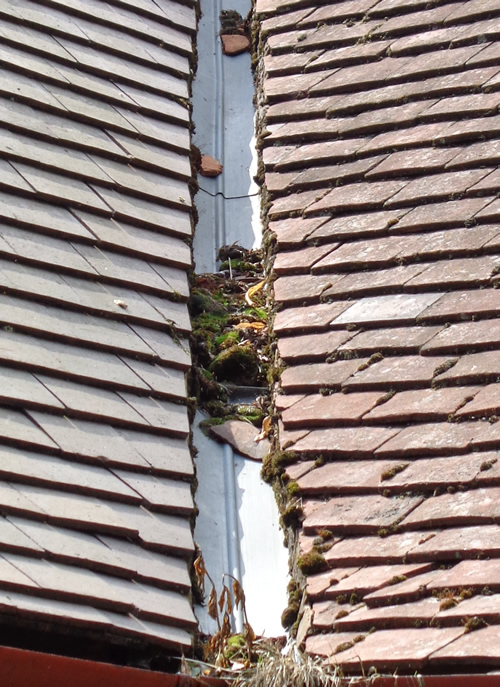
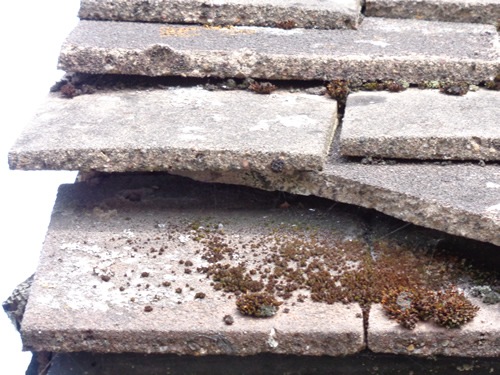
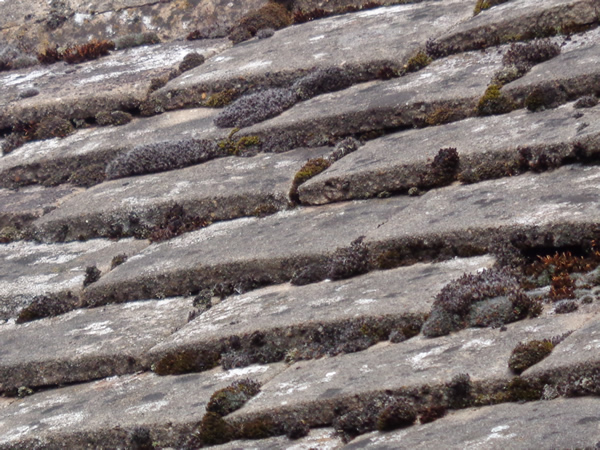
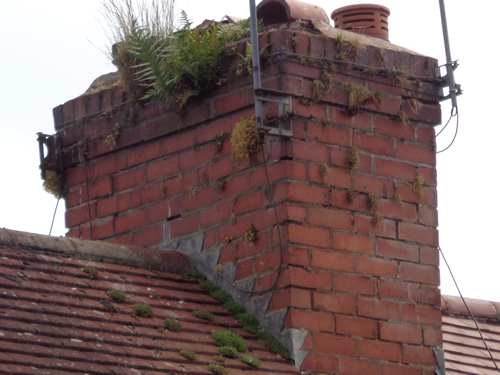
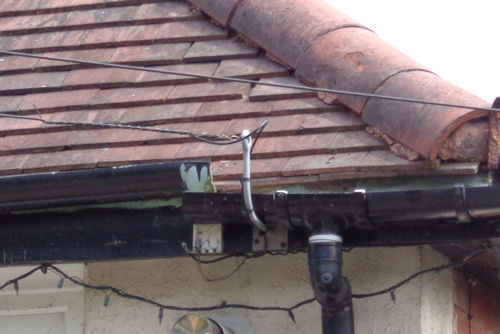
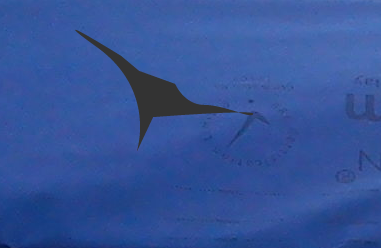
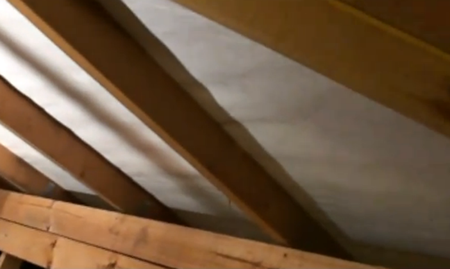
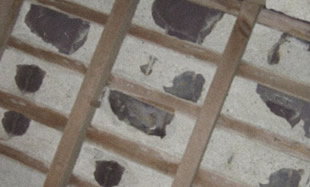
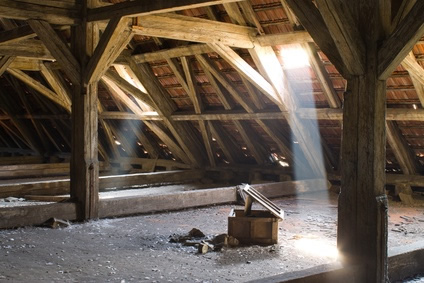

Thanks for your very helpful guide. I have a pitched roof on a loft conversion. It is covered with Marley Edgemere concrete interlocking tiles. Unfortunately it is leaking at the bottom edge of the roof, above a window. I’m worried that the roof pitch is too shallow and wind-driven rain is getting in under the tiles and causing the leak. It’s only 7 years old. A roofing company has looked at it with a drone and says that the roof is in good condition. However, they have said that the roof pitch is too shallow for tiles and the whole roof needs replacing. I’m really surprised. The builder was excellent and it was all approved by Building Control. Any thoughts on solutions short of replacing the roof?
Good advice here for spotting the early signs of roof damage.
As a proud homeowner, you worry about the structural strength of your home and cringe at the thought of a significant repair. Catching a leak early can save you a lot of money so it’s nice to see these tips out there helping people.
Hi Jon,
That’s so true many homeowners’ neglect or delay roofing problems at first instance. Whenever there is a roofing problem it needs attention and repair at the earliest. Regular checks are an essential part of home maintenance. Repair on time can save your money as well as your roof. Do a regular inspection of your roof time on time especially during spring season. The post is must a read for homeowners to be aware of the problems in advance.
This blog is best and having the best information about Pitched Roof Problems And Roof Repairs. A visual inspection of the roof can be made from ground level, maybe using binoculars if you have them. To cover all possible problems the roof space should also be inspected internally, if safe access is available, maybe via a loft hatch and ladder. thanks a lot for this blog post. its really very helpful and having very informative content.
Vermin need a way in, look for that first off, or their friends will very soon be joining them. Looking underneath guttering is usually a good start.
We have recently started hearing vermin in our loft and I set about looking for likely points of entry before setting about getting rid of them. To my surprise I have discovered that there is an opening at the gutter at every single corrugated concrete roof tile right along both sides of our pitched roof. The building is only a few years old can anyone tell me if the builder should have ensured that these voids were blocked up?